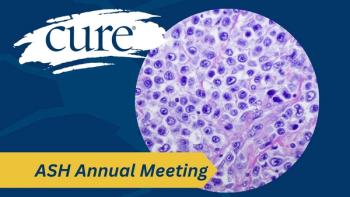
Opdivo Plus Chemo Did Not Improve Progression in EGFR-Mutated NSCLC
Treatment with Opdivo (nivolumab) and chemotherapy did not significantly improve progression-free survival when compared with chemotherapy alone among some patients with EGFR-mutated metastatic non-small-cell lung cancer.
Treatment with Opdivo (nivolumab) and chemotherapy did not result in significant improvements to progression-free survival (PFS; the time a patient lives without their disease spreading or becoming worse) when compared with treatment via chemotherapy alone among patients with epidermal growth factor receptor (EGFR)-mutated metastatic non-small-cell lung cancer (NSCLC) who had experienced disease progression on EGFR tyrosine kinase inhibitors (TKIs), researchers have found.
“Taken together, the optimal combinations of immunotherapy and chemotherapy with or without antiangiogenic agents are yet to be determined for patients with EGFR-mutated metastatic NSCLC who progressed on TKI therapy,” researchers wrote in the final analysis of the phase 3 CheckMate 722 trial, published in the Journal of Clinical Oncology.
In CheckMate 722, 294 patients were evenly assigned to receive either 360 milligrams of Opdivo and platinum-doublet chemotherapy every three weeks or chemotherapy alone every three weeks for four cycles. At a median follow-up of 38.1 months, PFS was 5.6 months for the Opdivo plus chemotherapy cohort, versus 5.4 months for the standalone chemotherapy cohort. PFS rates at nine and 12 months were 25.9% versus 19.8% and 21.2% versus 15.9%, respectively, according to the study.
However, researchers further noted that a post-hoc PFS analysis “showed a trend favoring (Opdivo) plus chemotherapy” among patients whose tumors were found to be harboring sensitizing EGFR mutations (median PFS of 5.6 versus 5.4 months), had been treated with one line of previous EFGFR TKI (median PFS of 5.6 versus 5.4 months) or both (median PFS of 6.3 versus 5.4 months) versus chemotherapy.
CheckMate 722 randomly assigned 367 patients at 83 sites in China, France, Hing Kong, Japan, South Korea, Singapore, Spain, Taiwan and the United States between March 2017 and June 2020, and ultimately 141 patients (median age 64, 42.4% male, 94.4% Asian) were treated in the Opdivo and chemotherapy arm and 143 patients (median age 61, 37.3% male, 92.7% Asian) were treated with standalone chemotherapy.
The patient cohorts were similar in terms of categories including the stage of their disease at study entry (92.4% and 86% stage 4), smoking status (61.1% and 62.7% never smokers), absence of metastases to the brain (64.6% and 66%) or liver (88.2% and 80%), one line of previous EGFR TKI (84% and 84.7%) and no previous use of Tagrisso (Osimertinib) (77.8% and 76%) among the Opdivo plus chemotherapy and standalone chemotherapy arms, researchers reported.
According to the study, the median overall survival (OS; the time a patient lives following treatment regardless of their disease status) was 19.4 months with Opdivo and chemotherapy and 15.9 months with chemotherapy alone. The objective response rates (ORR; patients whose disease responded partially or completely to treatment) were 31.3% with three patients achieving complete response and 26.7%, and the median durations of response were 6.7 months and 5.6 months, respectively.
Regarding safety, treatment-related side effects of any grade or grades 3 or 4 (serious to severe) occurred in 85.1% and 44.7% of patients treated with Opdivo and chemotherapy and 86.7% and 29.4% of patients who only received chemotherapy, with the most common treatment-related side effects of any grade in the two arms being anemia (39.7% and 35%) and nausea (31.2% and 35%) and the most frequent grade 3 or 4 side effects being anemia (15.6% and 9.1%) and decreased count of neutrophils (11.3% and 11.2), side effects leading to treatment discontinuation for 14.9% and 7.7% of participants and serious treatment-related side effects of any grade reported for 19.1% and 9.1% of patients.
Two patients in each arm had treatment-related deaths, with one patient in each arm dying of interstitial lung disease, one patient in the Opdivo and chemotherapy arm dying of pneumonitis and one patient in the chemotherapy arm dying of pneumonia.
For more news on cancer updates, research and education, don’t forget to





